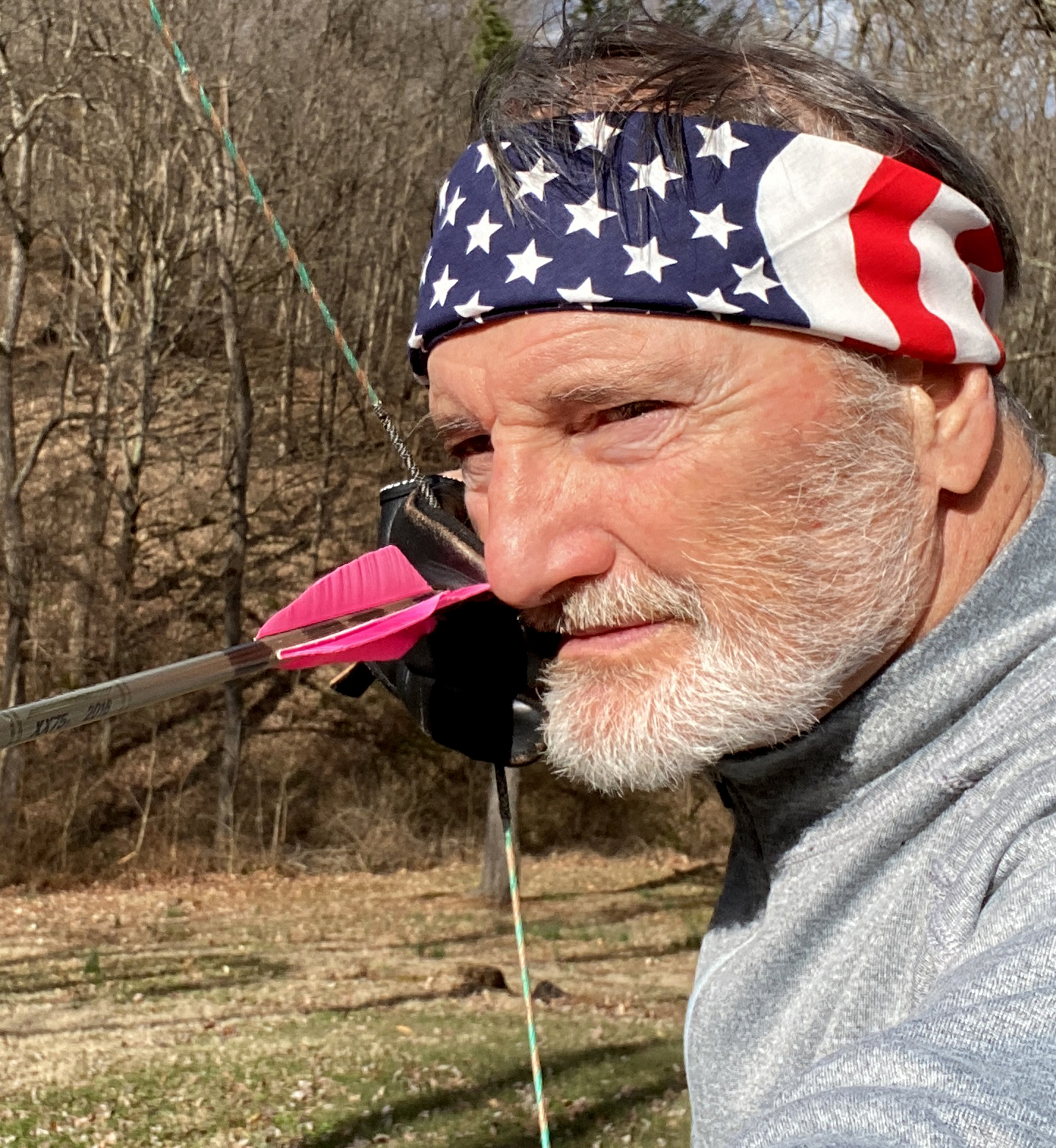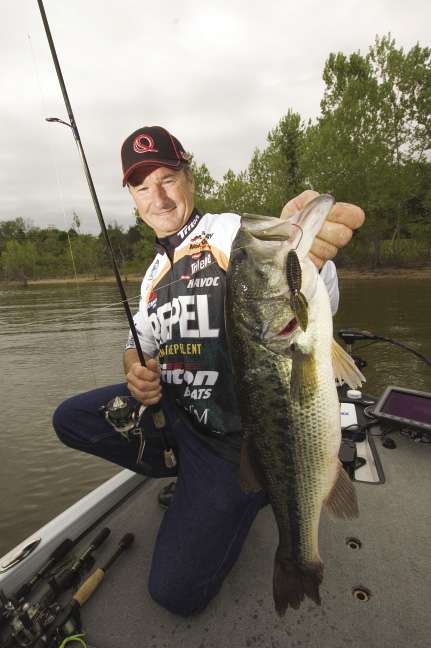
The shaky head worm and drop shot rig have become essential tools for virtually every Bassmaster Elite Series angler. However, another worthy finesse ploy, split shotting, gets little play among the pros.
That’s just fine with Texan Gary Klein, who has qualified for 29 Bassmaster Classics. Klein always has a little box of assorted split shot weights in his bass boat. When he comes across a situation where split shotting is the deal, it’s lights out.
“On numerous occasions, I’ve hammered bass by split shotting in the same area where I couldn’t get a bite with anything else,” the Elite Series pro says. “I’m talking some 100-fish days.”
Split shotting pays off for Klein in clear water reservoirs from California to Virginia, including natural lakes in the Northern states. The rig appeals equally to largemouth, smallmouth and spotted bass, Klein adds.
SPLIT SHOTTING BASICS
Klein’s introduction to split shotting goes back to his California roots three decades ago. That’s when he learned of San Diego fishermen who were split shotting 15-inch worms to catch giant largemouth. These anglers would anchor their boat and inch the split shot rig over the bottom by weaving the line in their fingers.
“When they got a bite, they’d drop the line, reel up the slack and set the hook,” Klein says.
These days, Klein relies on small baits for split shotting and forgoes the line-weaving gambit. He pinches a split shot 10 to 12 inches from the hook when casting to cover or dragging the rig over a hard bottom structure. The “leader” is increased to 15 to 18 inches when the bottom is soft.
In depths to 12 feet, Klein opts for a tiny BB shot. He also carries heavier shots in sizes No. 4 through No. 7 for deeper water. The No. 4 size, the heaviest, can weigh up to 1/8 ounce, depending on the manufacturer.
A 7-foot Quantum EXO spinning rod matched with an EXO X30 reel spooled with 6- to 10-pound-test Berkley 100 Percent Fluorocarbon handles Klein’s split shotting chores. He always steps up to 10-pound line when fishing shallow cover.
WHY NOT DROP SHOT?
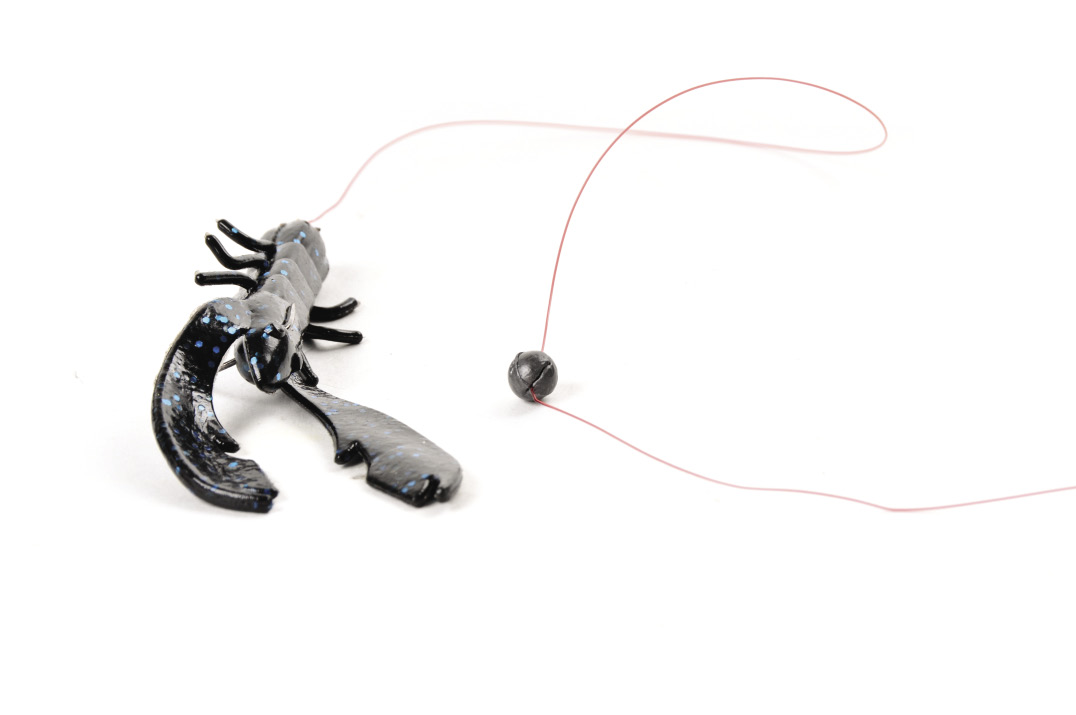 “Watch a split shot and a drop shot rig in a swimming pool and you’ll see that they are completely different presentations,” Klein says.
“Watch a split shot and a drop shot rig in a swimming pool and you’ll see that they are completely different presentations,” Klein says.
Because a drop shot weight is below the hook, you have a direct line to the bait. The slightest rod movement makes the bait respond with quick, sharp movements. But, when you move your rod with a split shot rig, the bait languishes behind the weight with a sluggish response.
“Some guys say a split shot is a downsized Carolina rig,” Klein says. “I agree, to some extent, but the split shot gives you a slower rate of fall. That’s one of the keys to its success.”
Clear, calm water is ideal for split shotting, Klein points out. Under these conditions, any lure that splashes into the water gets a bass’ attention. The slow sink rate of a subtle split shot rig has tremendous drawing power, Klein claims. Bass typically swim to the bait as it falls and strike soon after it touches bottom.
BAITS
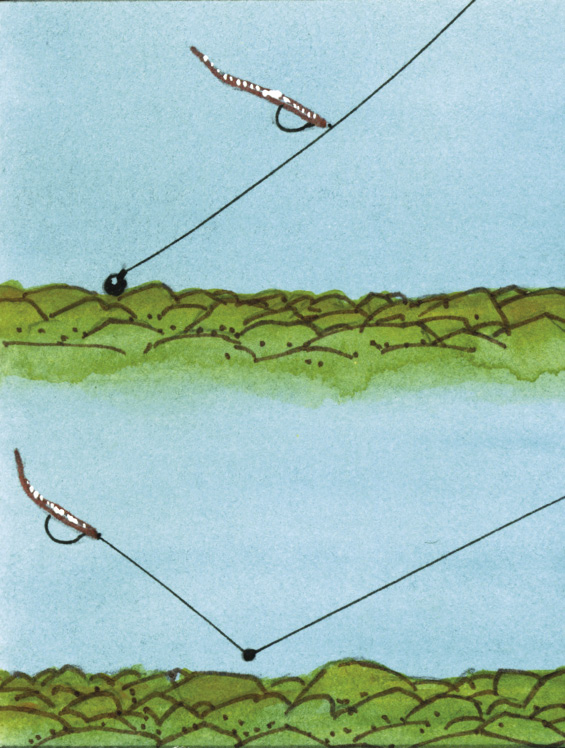 Although a split shot rig catches numbers of keepers, it also dupes quality bass for Klein. This is especially true when he dresses an EWG 2/0 light wire hook with a 3 1/2-inch Reaction Innovations Smallie Beaver. He claims that this lure’s bulky profile encourages big bass to “clock it.”
Although a split shot rig catches numbers of keepers, it also dupes quality bass for Klein. This is especially true when he dresses an EWG 2/0 light wire hook with a 3 1/2-inch Reaction Innovations Smallie Beaver. He claims that this lure’s bulky profile encourages big bass to “clock it.”
Other go-to split shot baits for Klein are Berkley’s 3-inch Power Chigger Craw and 5-inch Power Shaky Worm. Besides showing bass a super-subtle presentation, a split shot rig lets you fish where shaky head worms and drop shot rigs frequently snag.
“The split shot glides right over riprap,” Klein says. “And, it won’t pull your bait down into submerged grass where a bass can’t see it.”
CLAM UP
The oblong clam shot is less prone to snagging than a round split shot, which is why Elite Series pro Alton Jones of Lorena, Texas, prefers it. His basic setup consists of a 1/8-ounce clam shot 12 to 14 inches in front of a 4-inch Yum Mightee Worm Texas rigged on a 1/0 XCalibur Tx3 Wide Gap Worm Hook. A light action spinning outfit with 8-pound Silver Thread Fluorocarbon is Jones’ delivery system.
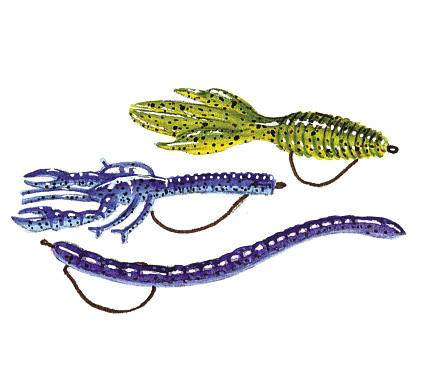 When fishing a snaggy bottom, Jones pinches a string of clam shot to the line, which makes his split shot rig even more resistant to hang-ups. A 1-inch string of four 1/16-ounce clam shots allowed Jones to nab first place when he fished a Bassmaster E50 tournament on the Ohio River at Paducah, Ky., in June 2004.
When fishing a snaggy bottom, Jones pinches a string of clam shot to the line, which makes his split shot rig even more resistant to hang-ups. A 1-inch string of four 1/16-ounce clam shots allowed Jones to nab first place when he fished a Bassmaster E50 tournament on the Ohio River at Paducah, Ky., in June 2004.
Bass were scarce for all the competitors at that event. The only place Jones could get bites was in a small eddy about 300 yards below the Kentucky Dam.
The tailwater bass demanded a finesse presentation, but the strong current and riprap bottom made for a snag-fest with shaky head worms and drop shot rigs. However, the short string of clam shots that Jones placed 12 inches in front of a 4-inch finesse worm tickled nicely over the bottom with the current.
Jones camped on the eddy all four days of the tournament and eked out 20 bass with his split shot rig that weighed 43.4 pounds. He claims he was a proponent of split shotting long before this tournament.
“I knew I’d eventually win a major tournament by split shotting,” Jones says. “Actually, I’m surprised it took me 15 years to make that happen.”
A split shot rig catches bass for Jones throughout the year and fares best for him in water less than 12 feet deep. It truly shines in cold water and when the beds of spawning bass are too deep to be seen and must be fished blind, Jones claims. He has caught spawners weighing up to 9 pounds by split shotting.
NO BULL
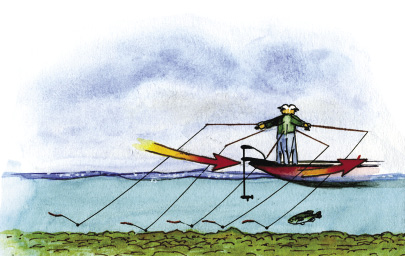 That bass practically hook themselves on a split shot rig is the reason it has become a day-saver for noted Potomac River bass guide Steve Chaconas. Many of his clients have limited fishing experience. They cast poorly and have trouble sensing strikes with things like jigs and Texas rigs.
That bass practically hook themselves on a split shot rig is the reason it has become a day-saver for noted Potomac River bass guide Steve Chaconas. Many of his clients have limited fishing experience. They cast poorly and have trouble sensing strikes with things like jigs and Texas rigs.
Chaconas puts these novices in touch with bass by fishing flats and shallow bays where the bottom is covered with hydrilla or wood debris. Here, casting accuracy isn’t an issue. Then, Chaconas sets his clients up with a spinning rod sporting a split shot rig on 10-pound Berkley 100 Percent Fluorocarbon.
“I instruct them to move the bait along the bottom by slowly sweeping the rod tip sideways a few feet at a time,” Chaconas says. “The bass usually hook themselves before my clients know they’ve had a bite.”
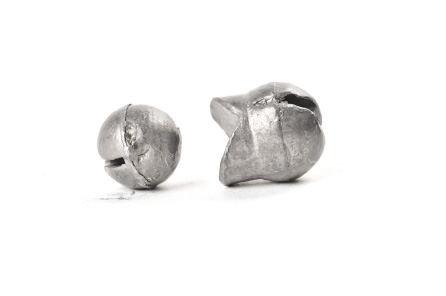 The heart of Chaconas’ split shot rig is a Water Gremlin 3/16-ounce Bull Shot. The weight’s pointed nose pushes nicely through cover. The business end of the line is fixed to a 5-inch Mann’s HardNose Finesse Worm that’s Texas rigged on a 2/0 Mustad Ultra Point Mega-Lite Hook.
The heart of Chaconas’ split shot rig is a Water Gremlin 3/16-ounce Bull Shot. The weight’s pointed nose pushes nicely through cover. The business end of the line is fixed to a 5-inch Mann’s HardNose Finesse Worm that’s Texas rigged on a 2/0 Mustad Ultra Point Mega-Lite Hook.
When fishing a bottom where bass relate to scattered wood debris, Chaconas pinches the Bull Shot 18 inches from the hook. In submerged grass, he increases that distance to 24 to 36 inches, so the worm floats above the grass.
“When that rig gets in front of a bass, you’re going to get bit,” Chaconas says.
Power Fishing A Split Shot
Fishing a split shot rig isn’t always a painfully slow proposition, points out Gary Klein. When temperamental bass relate to visible cover — say, a windfall, big boulders or flooded bushes — Klein power fishes a split shot.
“In that situation, I’ll cast a split shot tight to the cover and let it sink to the bottom,” Klein says. “If I don’t get a bite after moving the bait a few feet, I reel in and cast to another target.”
More Split Shot Baits
You can fish virtually any soft plastic bait with a split shot rig, including Fluke-style lures. They spiral as they fall and have big bass appeal, something I learned while competing in a Bass Pro Shops Bassmaster Northern Open at Lake Champlain in July 2010.
I started by swimming a jig over submerged grassbeds, but the bass had other ideas. So, I tried pitching jigs and frogging thicker sections of grass. I backed out and worked Texas rigged craws and worms though submerged grass. I had less than three hours of fishing time left, and I had five squeakers.
Finally, my co-angler, New York’s Ken Hoffman, caught three 3-plus-pounders by split shotting a watermelon Zoom Super Fluke in grass 6 to 8 feet deep. I had never tried split shotting and didn’t have any of the weights with me. Hoffman gave one to me, a reusable tin shot with “ears.” I estimated its weight at 1/8 ounce.
I rigged it with a watermelon Yum Houdini Shad and proceeded to cull every bass I had, and more, over the next two hours. My two biggest largemouth weighed 4 pounds each.
To see the entire June 2013 issue of Bassmaster Magazine, click here.

